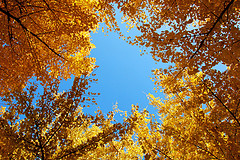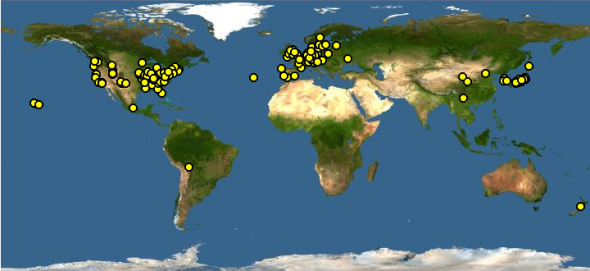Habitat & Geography
Ginkgo biloba isn’t just known
for its unique survival history, it’s also known for how it
affects the environment. Many times, these trees are not planted
for their beauty but for their ability to withstand almost any
environment.

The Ginkgo tree can be found in big cities such
as San Francisco, California and Buenos Aries, Argentina as well
as small little towns like Hortonville, Wisconsin. The reason
most cities plant this tree is because of its resistance to
pollutants, fungicides, insects (along with most insecticides),
disease, bacteria, droughts, and smog. Not only can it resist
pollution, but because it goes through photosynthesis it can
convert carbon dioxide into oxygen. This all-around amazing
defense along with its photosynthetic abilities and its natural
ability for providing shade is why the Ginkgo tree is the most
widely planted tree in New York City, New York.
The habitat for the Ginkgo tree is usually a
temperate climate, so it can be grown in most parts of the
world. Ginkgo trees prefer sunlit places with moist
soil. Also, the Ginkgo roots can grow to be pretty
long, so they usually like it when the soil runs deep. The most
popular places Ginkgo biloba can be found are in America,
Asia, and Europe. The picture below illustrates the larger
populations of Ginkgo biloba.

*Map from
Discover Life- click on map for details, credits, and terms
of use
With a tree this resistant to so many things,
ancient Chinese people thought this hardy organism had to have
some Medicinal Purposes, and they were right! Click
HERE to find out just how
many ways this extraordinary tree can help you!
HOME
